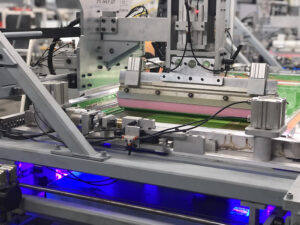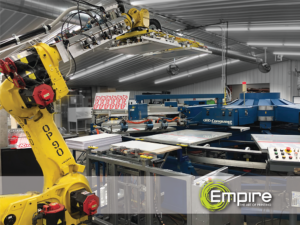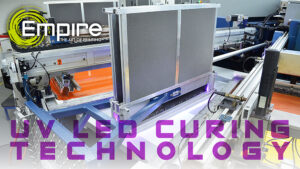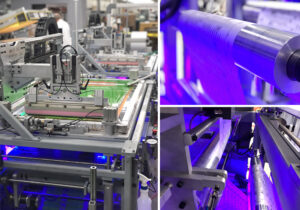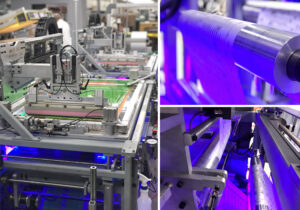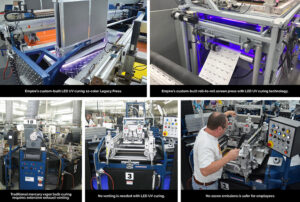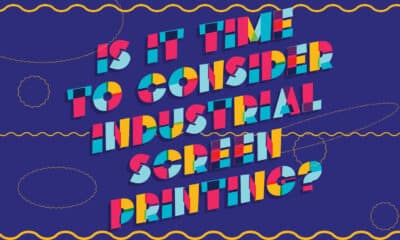SCREEN PRINTING IS A notoriously polluting industry. The sheer number of manual steps involved in many screen printing shops invites mistakes and material waste. LED curing can not only help screen printers do their part for the environment, but also have a multiplying effect on process efficiency and capacity for growth.
Generally, the most inefficient and unsustainable part of the screen printing process is the use of heat to cure (or “set”) solvent ink into the substrate. This process releases hazardous byproducts (including Methanol, Ethanol and more) that pollute the environment and are carcinogenic or otherwise toxic to humans. By opting for LED curation of UV inks, Empire is not just doing our part for the environment, but driving efficiency and cost savings throughout the entire screen printing process, from material usage to energy and utilities.
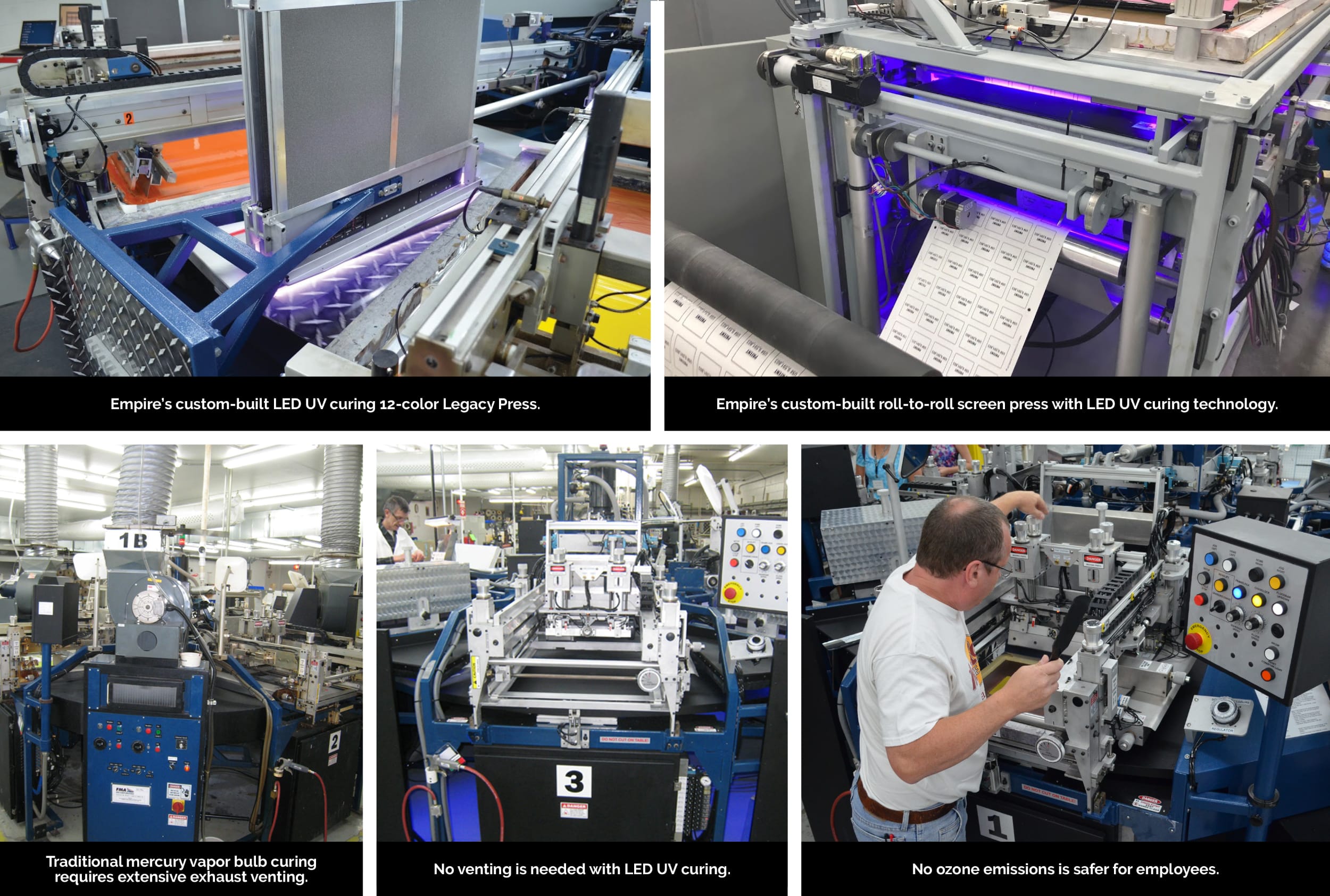
The combination of UV and LED in manufacturing doesn’t produce ozone emissions or harmful volatile organic compounds (VOCs), eliminating the need for workplace ventilation systems. The UV LED process is also 98 percent more energy efficient than traditional UV mercury curing.
However, workflow speed is probably the biggest draw of LED curing from a financial standpoint. With traditional solvent technology, curing occurs only after the ink is printed, and traditional screen printing generally involves printing one color at a time. Typically, printers must wait 24 to 48 hours before moving onto the next step. Meanwhile, as much as 40 to 60 percent of solvent ink evaporates during each cycle.
With LED technology, 100 percent of the ink remains on the material. This method enables printing as many as 12 colors simultaneously, and curing takes less than 15 seconds. Businesses can go from raw material to finished product in less than 20 minutes, compared to a multi-week, sometimes multi-month process for a single project.
Advertisement
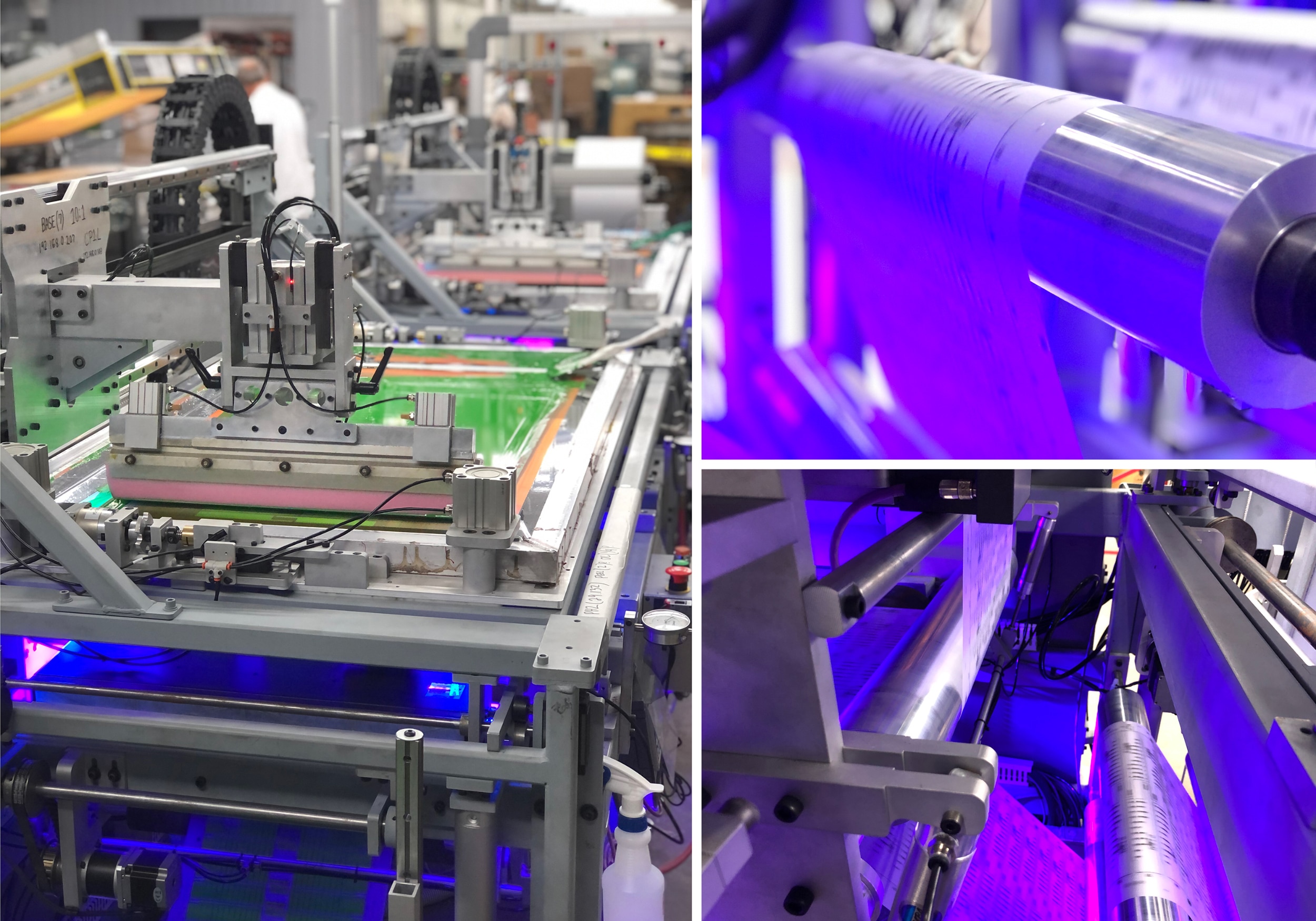 LED curing is efficient and sustainable. Images courtesy of Empire.
LED curing is efficient and sustainable. Images courtesy of Empire.
At Empire, moving to LED curing enabled reorienting workflows for single-piece flow: the ability to make a finished product in one process, minimizing back-and-forth between manufacturing entities. This is possible because an LED-based workflow enables identifying and correcting problems in real time during manufacturing. Previously, a dedicated quality control team could point out errors only after the fact, and the process had to repeat. Material waste now stands at less than 1 percent for the entire year.
Redesigning the entire manufacturing process around LED curation can be intimidating when workflows are already in place. This is why it’s important to understand that companies using UV-based inks can cure with LED and mercury vapor within the same process to keep workflows moving during adoption. To ease the transition, Empire also developed its own off-the-shelf LED curing units.
Combining LED technology with investments in automation ensures our capacity is scalable- -that the company can continue to grow within its current structure. In fact, we source 30 percent of our jobs from screen printers that lack the capacity to print high-risk jobs, such as those with multiple colors. Our example shows how making sustainable choices also can save time, boost profits, and keep employees safe. It’s time the industry takes note.
PHOTO GALLERY (6 IMAGES)
Advertisement
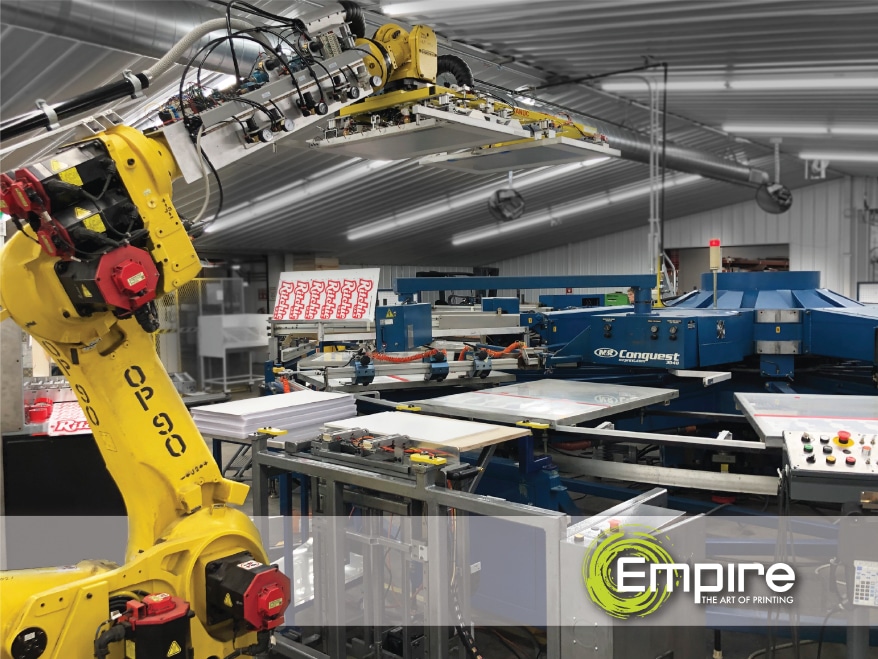

 Case Studies2 months ago
Case Studies2 months ago
 Art, Ad, or Alchemy2 months ago
Art, Ad, or Alchemy2 months ago
 Andy MacDougall2 months ago
Andy MacDougall2 months ago
 Columns4 weeks ago
Columns4 weeks ago
 Editor's Note3 weeks ago
Editor's Note3 weeks ago
 Marshall Atkinson3 weeks ago
Marshall Atkinson3 weeks ago
 Thomas Trimingham2 months ago
Thomas Trimingham2 months ago
 Case Studies4 weeks ago
Case Studies4 weeks ago

 LED curing is efficient and sustainable. Images courtesy of Empire.
LED curing is efficient and sustainable. Images courtesy of Empire.